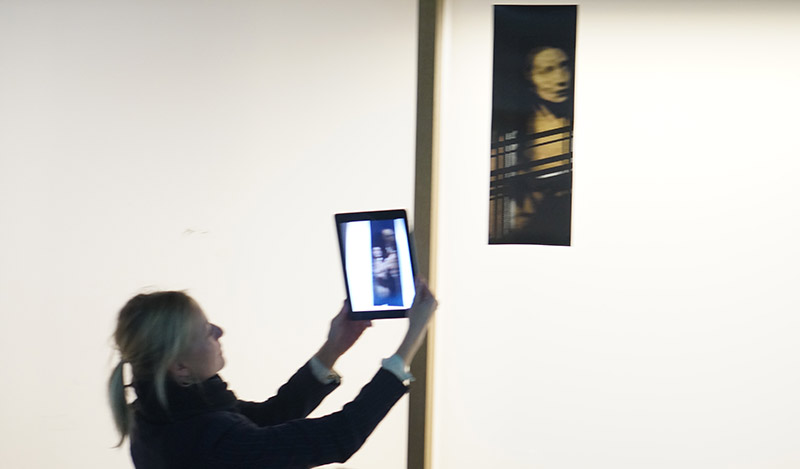
A ‘tag’ triggering a video sequence in an Augmented Reality tablet application
This is the abstract of a paper presented at the NODEM 2014 conference “Engaging Spaces – Interpretation, Design and Digital Strategies”, December 1-3, 2014.
Affective and Rhythmic Engagement with Archival Material: Experiments with Augmented Reality
Authors: Susan Kozel, Jacek Smolicki and Daniel Spikol
Digital content in Augmented Reality platforms tends to be handled according to photorealistic or historically authoritative criteria. This frequently creates content that engages visitors to museums or heritage walks for only short periods without creating a deeper engagement or interaction with the material. The Living Archives project, a project at Malmö University funded by the Swedish Research Council’s Digitalized Society initiative, has two research strands, one investigating the Performance of Memory and the second exploring Open Data. The aspects of Living Archives we choose to present at this conference deal with the distinctly (and deliberately) ambiguous areas of rhythm and affect translated into strategies for manipulating content and creating audience engagement.
Overlapping closely with artistic research practices and methodologies, archival material in this project takes the form of digitally rendered photos, sounds and videos from the last century, combined with so-called ‘new’ or ‘live’ archives captured in the present moment with a range of recording and editing technologies, including media applications such as Vine and Instagram. Explorations of affect within Living Archives have produced an approach to Augmented Reality as a form of Augmented Choreography, and have underpinned a related artistic project called AffeXity, which uses archival dance material from the 1950s until present (in collaboration with the Royal National Danish Theatre). Taking an affective approach lets us reconfigure the editing and presentation of the material as well as the audience engagement. Complementing the affective approach to archival material is a rhythmic approach, which identifies the rhythmic pull that both visuals and sound exert on one who experiences media, and explores how media can place the archival material into counterpoint with the urban spaces vibrating around it.
This paper is available on pages 293–304 in the conference proceedings from NODEM 2014. If that link doesn’t work, try the saved version on archive.org.
Kozel, Smolicki, and Spikol’s presentation is available on YouTube, and embedded below.



